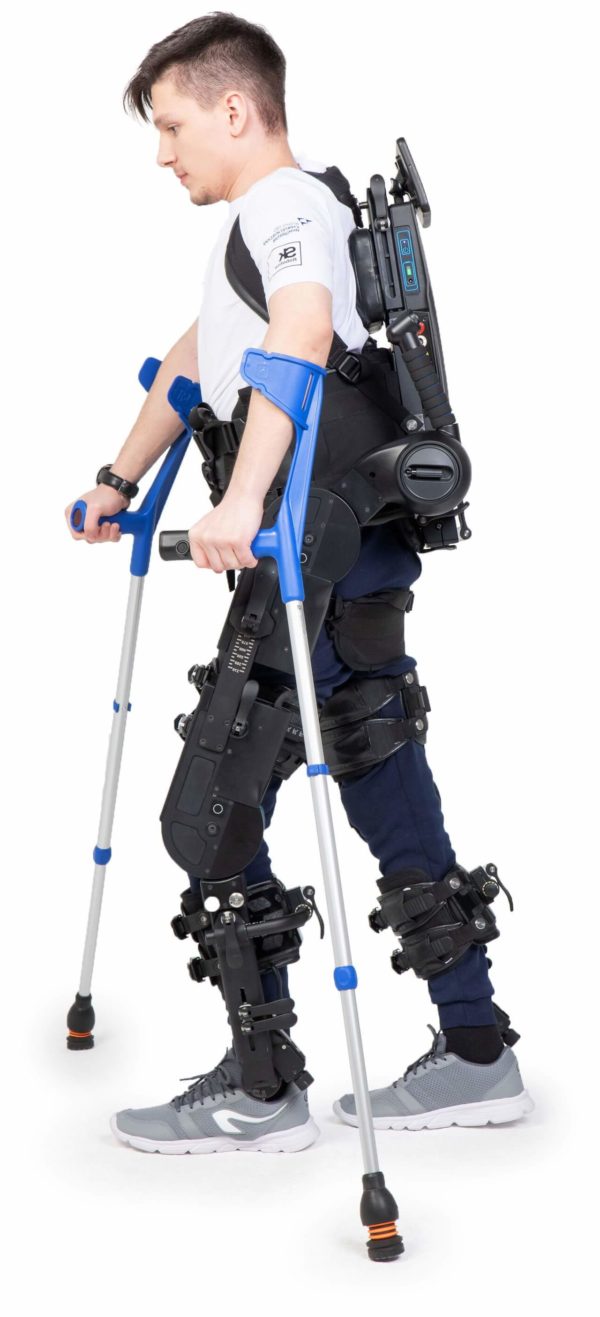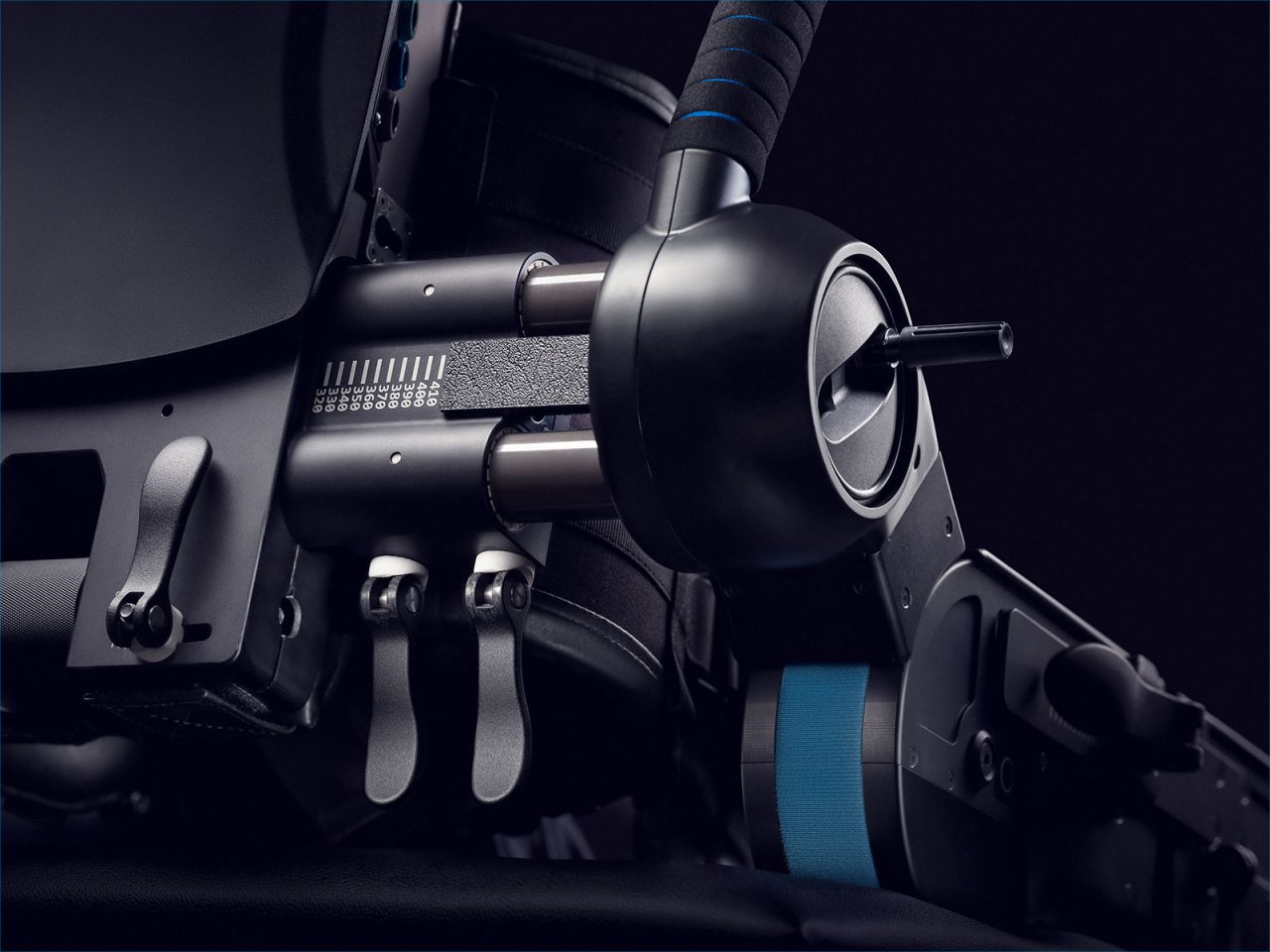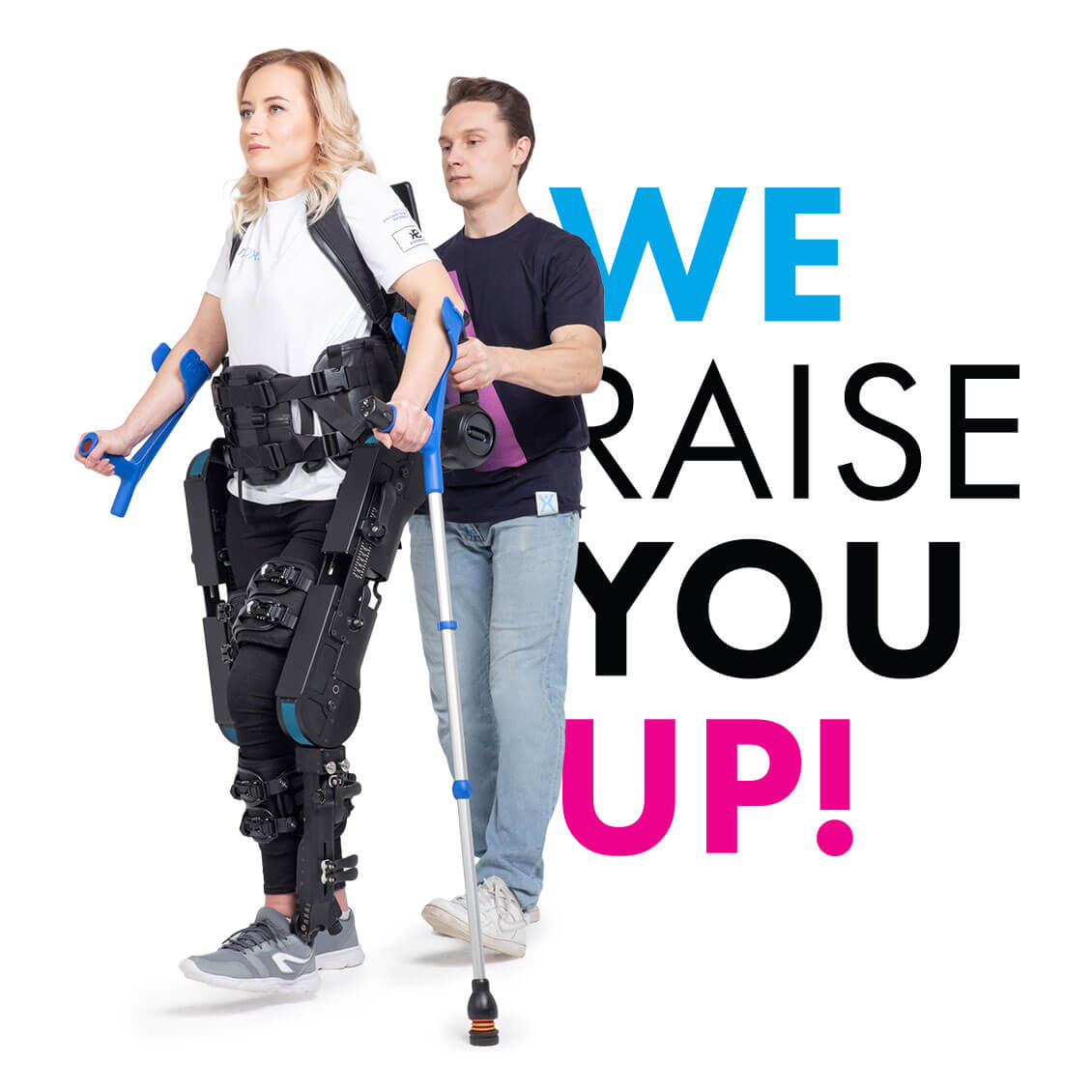
ExoAtlet II
is intended for use as a gait training and rehabilitation device to improve walking function and independence in patients with a neurological or muscular injury, illness, or weakness.Request a demo
Methods of control
— Smart crutch for a patient;
— Tablet for medical staff or an assistant.
Usability and safety features
— Natural gait pattern: accurate adjustment
for every patient;
— Ergonomic handles on the back for physical
therapists with the control button;
— Emergency shutdown & Spasticity Protection Unit;
— Back support for patients with cervical injuries;
— Ergonomic materials that are easy to clean;
— One battery charge is enough for a full day’s training;
— Adjustments don’t require any tools;

- up to 100 kg
– a patient’s weight - 160-190 cm
– a patient’s height

For patients with
— STROKE
— CEREBRAL PALSY
— SPINAL CORD INJURY
— MULTIPLE SCLEROSIS
— TRAUMATIC BRAIN INJURY
— and after ARTHROPLASTY

CE Mark and ISO:13485 certified, cleared by FDA.

EXOCLOUD
Real-time training reporting
Convenient way of controlling the data on training sessions, the analysis of which allows to tailor the ExoRehabilitation sessions more efficiently to the patient’s needs.
